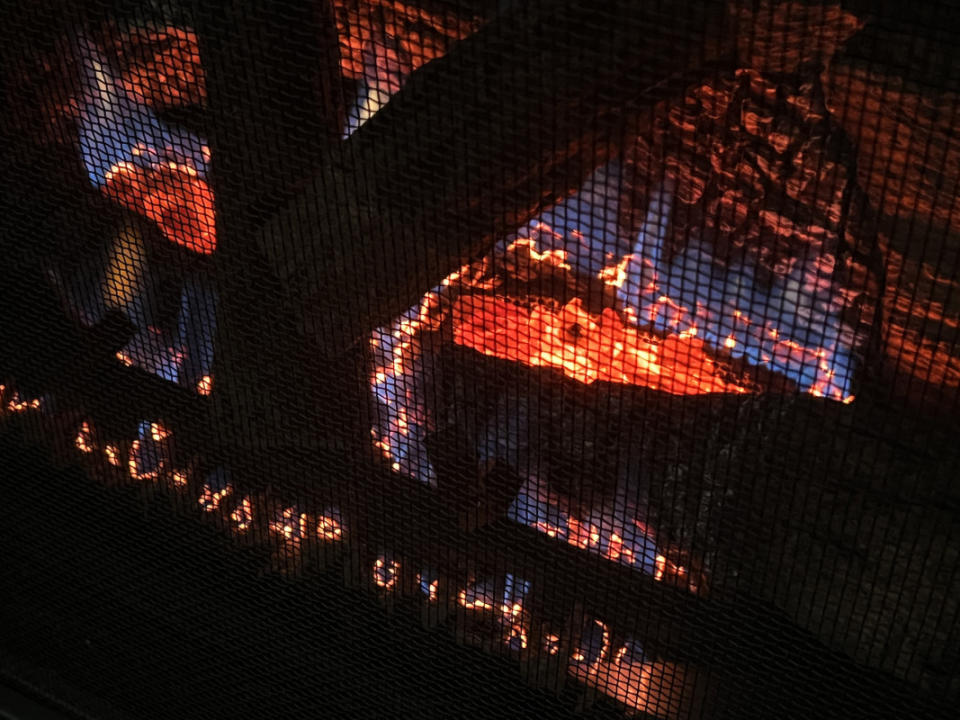Is an Electric Fireplace More Efficient Than a Gas Fireplace?
In the debate between electric and gas fireplaces, efficiency considerations weigh heavily. However, understanding factors like heat output, installation complexity, operating costs, and ambiance can be confusing.
Electric fireplaces are energy efficient and are relatively easy to install and require less long-term maintenance.
Gas fireplaces boast high heat output and authentic flames but require professional installation and may have venting restrictions.
So, the question of which is the best fireplace option depends on individual priorities; those valuing efficiency and convenience may lean towards electric, while those prioritizing heat output and ambiance may opt for gas.
How to Choose Between Gas and Electric
Consider Heat Output Needs. Assess the square footage of the space you want to heat. Gas fireplaces provide higher heat output, making them suitable for larger spaces. They also cool more slowly putting off adequate heat even after they have been turned off.
Evaluate Energy Efficiency. If energy efficiency is a priority, electric fireplaces may be preferable, as they convert almost all energy into heat. They also use a cleaner source of energy if that is of importance.
Installation Requirements. Evaluate your willingness to deal with installation complexities. Gas fireplaces may require a propane tank, carbon monoxide detectors, professional installation and fireplace vents. Electric fireplaces are generally easier to install, and depending on the model, may be as easy as plugging your model into a standard outlet.
Ambiance Preferences. Consider whether the authentic experience of real flames is crucial for you. Gas fireplaces often provide a more realistic flame ambiance. Although, electric fireplaces can come with audio systems that provide the crackling sound effects of a traditional wood-burning fireplace.
Related: How to Clean Your Fireplace All By Yourself
Venting Considerations. Assess your home's venting capabilities and restrictions. A direct vent gas fireplace will require a chimney and access to an exterior wall to draw in fresh air for combustion. A ventless gas fireplace does not require a chimney for venting but some users are sensitive to the small amount of pollutants and moisture that may escape into the home. Electric fireplaces typically don't require venting and don't produce pollutants thus providing more flexibility in placement.
Budget Constraints. Compare the upfront costs of both options, factoring in installation expenses. Electric fireplaces are often more budget-friendly in terms of installation.
Maintenance and Long-Term Costs. Consider long-term maintenance and operational costs. Gas fireplaces may require a propane tank and monitoring of a propane supply. Electric fireplaces usually require minimal maintenance like replacing a burnt-out bulb and tend to have lower operational costs based on the local cost of electricity.
Placement Flexibility. Think about where you want the fireplace. Electric fireplaces can be placed virtually anywhere with an electrical outlet, while gas fireplaces may have more placement restrictions due to venting requirements.
Practicality and Safety. Electric models like a space heater depend on a power source, so you can not rely on them during power outages. Gas units are more reliable in these situations but they do require annual maintenance tasks like chimney cleaning and gas line inspections to check for gas leaks.
Ultimately, the final choice is based on your personal preferences for heat source, ambiance, ease of installation, and the specific needs of your living space.

Emily Fazio
Related: Click to Remove This Ugly Fireplace Surround
How do Ethanol Fireplaces Compare?
Ethanol fireplaces offer a unique alternative, distinct from electric and gas options. They burn bioethanol fuel which produces real flames without the need for venting or a chimney. They are a popular option for their simple installation and design flexibility, as they can be freestanding or wall-mounted, offering versatile placement.
While they provide ambiance, they typically offer less heat output compared to gas alternatives, making them more suitable for aesthetic enhancement rather than primary heating. They also emit moisture as a byproduct of the combustion process which though minimal, may be unwelcome in a small space or certain climates.
Ethanol fireplaces would be a great option for a secondary heat source. It appeals to those prioritizing design versatility, easy installation, and the absence of venting requirements, providing a contemporary and eco-friendly alternative in the realm of home heating solutions.

